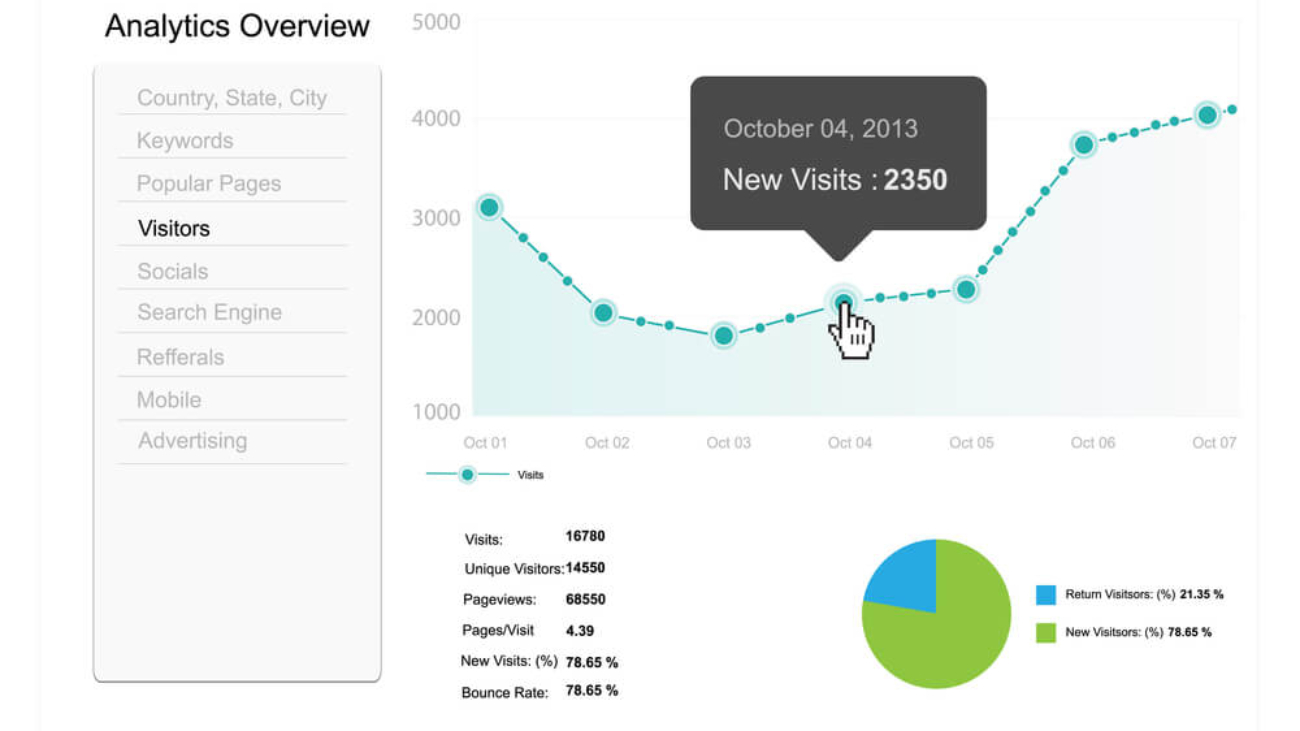Tracking metrics in Google Analytics is crucial for seeing what is and isn’t working with your digital marketing. Without that information, you’re pretty much flying blind rather than making informed decisions based on real data. These metrics are particularly helpful for measuring the effectiveness of your search engine optimization (SEO) and pay-per-click (PPC) advertising. See which metrics in Google Analytics you should track so it’ll be easier to monitor and improve your digital marketing.
6 Key Metrics in Analytics to Track
Google Analytics provides an assortment of metrics and depending on your business, there may be other metrics besides those listed below that you should be tracking. However, the metrics outlined in this article are universal as they provide a solid starting point for understanding your website’s performance and digital marketing’s effectiveness.
Users
The total number of users who have initiated at least one session in a time frame. This metric is particularly important for better understanding dimensions like traffic source/medium (e.g. google/organic, facebook/cpc) as well as landing pages.
Sessions
A session is a group of user interactions with your website that happen within a time frame. Consider a session like a container for the actions a user takes on your site. Examples of interactions included in a session are multiple page views, events, and transactions.
Bounce Rate
A ‘bounce rate’ is the percentage of single-page sessions that had no further interaction with the page. If a page’s bounce rate is 60%, it means that 60% of users left the page without taking any further action. Reasons for a high bounce rate can be due to the page having irrelevant keywords or low-quality content.
Pages / Session
The average number of pages viewed during a session. When there are more pages per session, it indicates a higher level of engagement since users are exploring your site and learning about your products or services.
Average Session Duration
The average length of a session. Keeping visitors on your site longer is beneficial as it increases the chances of a user interacting with your website which can range from making a purchase to commenting on a blog post.
Conversions and Conversion Rate
Site traffic won’t matter much if you’re not getting any conversions, hence the importance of setting goals in Analytics to track ‘conversions’ and ‘conversion rates.’ You can track a variety of goals like transactions, form submissions, reservations, downloads, and more.
Improve Digital Marketing with Real Data
Tracking metrics in Google Analytics allows you to better understand your digital marketing, monitor progress, and identify opportunities. Using real data is crucial for making better decisions whether it’s finding pages to optimize or determining the ROI on your Google Ads campaigns. Internet technology changes quickly and as data privacy changes are implemented, it’s critical for brands to take advantage of tools like Google Analytics to create innovative and responsive solutions.
An effective way to improve your digital marketing with real data is by using Ad Verification and Content Catcher. Contact us to schedule a free demo and trial to explore their unique features and benefits!

